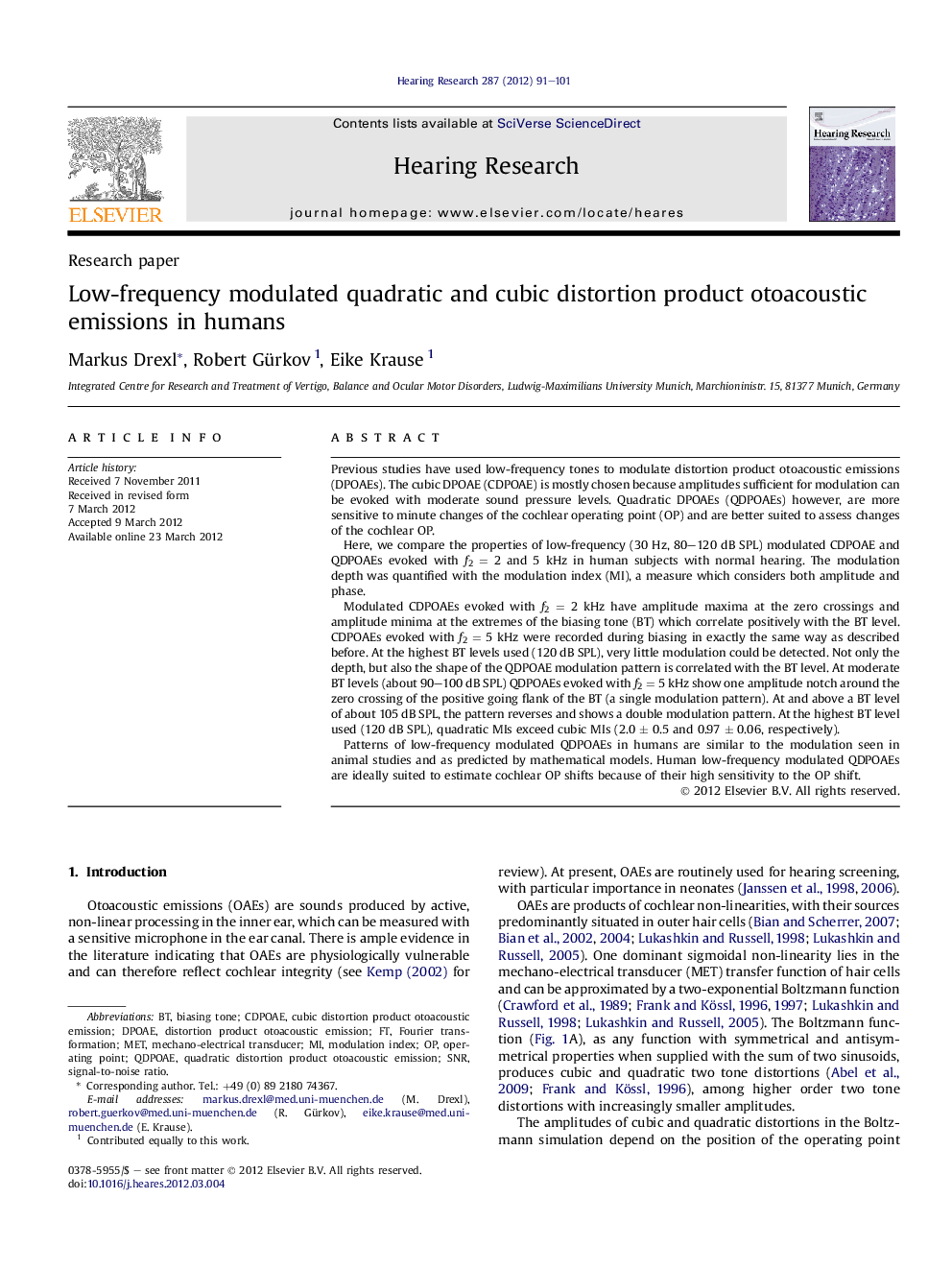| کد مقاله | کد نشریه | سال انتشار | مقاله انگلیسی | نسخه تمام متن |
|---|---|---|---|---|
| 4355345 | 1615613 | 2012 | 11 صفحه PDF | دانلود رایگان |

Previous studies have used low-frequency tones to modulate distortion product otoacoustic emissions (DPOAEs). The cubic DPOAE (CDPOAE) is mostly chosen because amplitudes sufficient for modulation can be evoked with moderate sound pressure levels. Quadratic DPOAEs (QDPOAEs) however, are more sensitive to minute changes of the cochlear operating point (OP) and are better suited to assess changes of the cochlear OP.Here, we compare the properties of low-frequency (30 Hz, 80–120 dB SPL) modulated CDPOAE and QDPOAEs evoked with f2 = 2 and 5 kHz in human subjects with normal hearing. The modulation depth was quantified with the modulation index (MI), a measure which considers both amplitude and phase.Modulated CDPOAEs evoked with f2 = 2 kHz have amplitude maxima at the zero crossings and amplitude minima at the extremes of the biasing tone (BT) which correlate positively with the BT level. CDPOAEs evoked with f2 = 5 kHz were recorded during biasing in exactly the same way as described before. At the highest BT levels used (120 dB SPL), very little modulation could be detected. Not only the depth, but also the shape of the QDPOAE modulation pattern is correlated with the BT level. At moderate BT levels (about 90–100 dB SPL) QDPOAEs evoked with f2 = 5 kHz show one amplitude notch around the zero crossing of the positive going flank of the BT (a single modulation pattern). At and above a BT level of about 105 dB SPL, the pattern reverses and shows a double modulation pattern. At the highest BT level used (120 dB SPL), quadratic MIs exceed cubic MIs (2.0 ± 0.5 and 0.97 ± 0.06, respectively).Patterns of low-frequency modulated QDPOAEs in humans are similar to the modulation seen in animal studies and as predicted by mathematical models. Human low-frequency modulated QDPOAEs are ideally suited to estimate cochlear OP shifts because of their high sensitivity to the OP shift.
► Low-frequency tones were used to modulate amplitude and phase of DPOAEs in humans.
► Modulation patterns of cubic and quadratic DPOAEs are different.
► Quadratic DPOAEs are more sensitive to operating point shifts than cubic DPOAEs.
► Mechanisms of low-frequency biasing in humans is comparable to other mammals.
Journal: Hearing Research - Volume 287, Issues 1–2, May 2012, Pages 91–101